Laying Pipe
by Andrew Papenheim · 9 April 2019
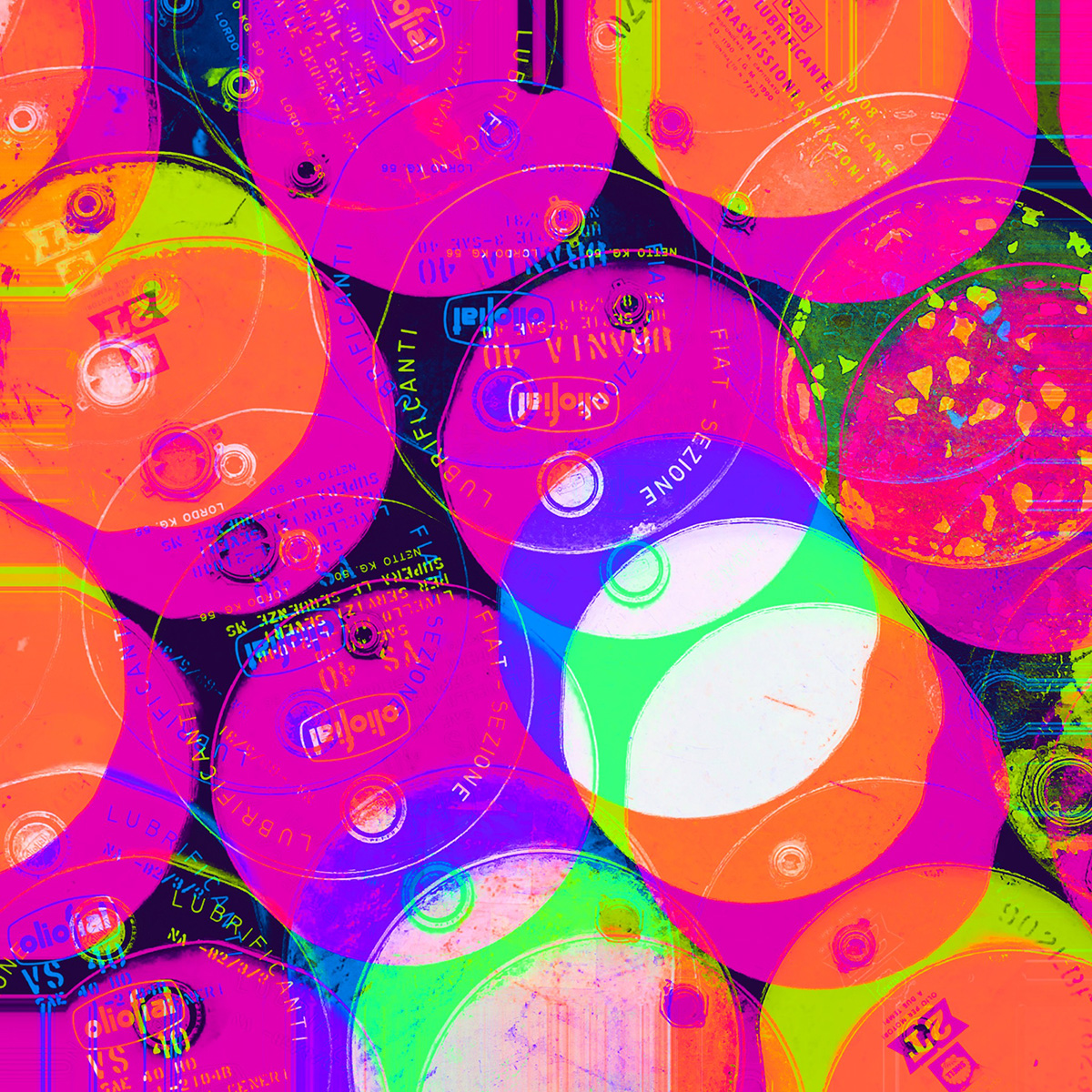
Maintenant plus que jamais, what Canada needs is another pipeline post.1
Canadian politics can be a sophomoric place, though the layperson may well insist otherwise. The deceptive mirage of calm, pluralistic decision-making, like a siren of stability in a world at its absolute brink, calls out and attracts outlets from Bloomberg, to The Economist, to the New York Times. Neither are our hometown papers immune. The op-ed pages of the National Post and Globe and Mail alike teem with pieces describing our processes as either emulable or exceptional. This obscures – from the world and, indeed, from Canadians – a process of both anxiety and awe, mirth and mire in which real and durable internecine dispute places stricture on everything from religious licence to license plates to plonk. This is a big land of small, petty politics.
It is in this rich vein of unbearable smallness that we hear from a very small party, the Alberta Liberal Party (one seat in Edmonton before the 2019 election, zero after), at the Alberta leaders debate. Amidst the inter-party jousting and one-ups-person-ship to prove exactly which team is most firmly in favour of state support for primary extractive export infrastructure, their leader David Khan offers a show-stopping one-liner:
I’m the only leader up here who’s actually laid pipe in the Brooks area one summer in my undergrad, so I’ve actually built a pipeline…
What a strange, erotic journey for the province which introduced the haunting spectre of so-called “Sex Marxists” into the Canadian political conversation to now share with us, in lurid detail, their sexual impulses. As it happens: Province of provincialism, it is not.
For those blissfully unattuned to gutter colloquialisms, wondering what on earth this dust-up is about, first of all: Congratulations on successfully avoiding a musical canon spanning David Wilcox to Azealia Banks! Second: I must direct the reader to the gold standard community reference work for modern slang, which offers this gem as the top definition for “lay the pipe”:
To fuck a girl REAL GOOD.
So hard she’s begging and crying for you not to stop and because the orgasm is so damn good.[Example:] “I laid the pipe WELL on this chick last night. She was shakin’ when I got done with her!!” (Link.)
The heteronormative assumption within this definition is unfortunate, doubly so as Mr. Khan is of a marginalized sexual minority. My reaction upon first hearing his remarks was a bemused Finally! Visibility for the Top community in Canadian politics! This is not in any way to suggest that Khan intended to air his undergraduate sexual dalliances in the middle of Alberta’s leadership debate, though that would be far from the crudest thing a person seeking or holding elected office has said in 2019. HuffPost Canada caught up with Khan after the debate, at which time he forcefully denied suggestions of a practiced double entendre, stating in part that “I think people know that I didn’t know what it meant.” With an abundance of charity and good humour, I will take the well-read leader of the Alberta Liberals at his word. Let us assume, with the ad-libbed aside a painfully permanent fixture of modern politics, that the Alberta Liberal team – however large it is – did not have the capacity to scrutinise and workshop every line. Rare among us are the individuals who have never accidentally blue themselves. He simply did not know.
Surely, after the debate, with Twitter alight, David Khan knew. It was into this boisterous, post-debate social media milieu that Khan announced a new line of campaign merchandise. He did not shy from his bawdy talk, but rather leaned into it full force, touting a mockup for Pipe Laying red hats:
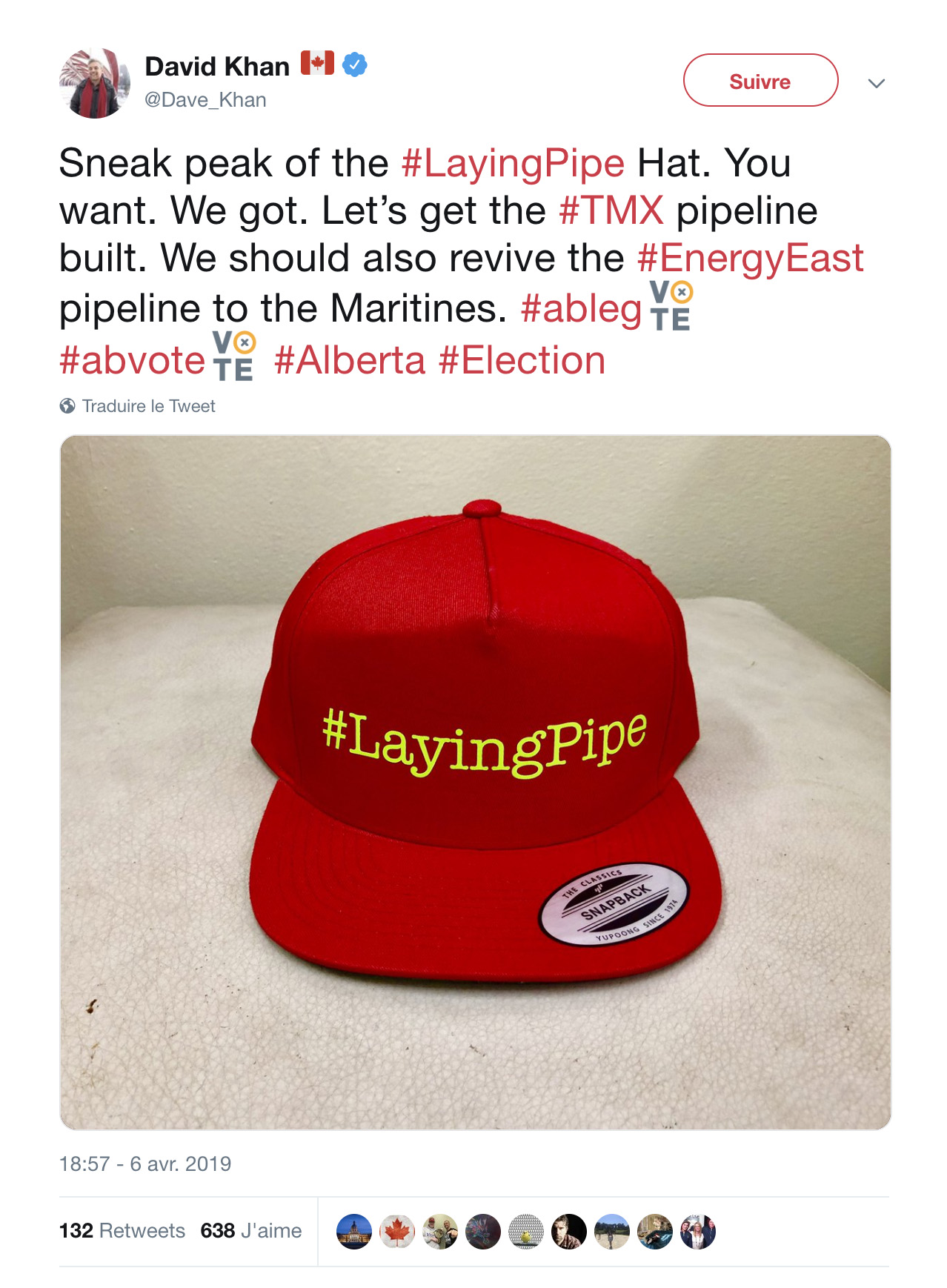
Anyone desiring a hat of their own is in luck, for the price of admission (with matching t-shirt!) is a $99 donation to the Alberta Liberal Party.

A foul-up in debate deserves no more than a tweet. The decision to turn such a flub into an icon – specifically a red baseball cap – is the impetus for this article. I author a little webnotebook of visual culture in the civic sphere, and this artifact struck a chord with me. What follows are two discussions: The first, of the qualities sewn into a red cap, while the second relates to the prospective bearers of said hats and the general tenor of Alberta politics.
On Red Hats
The first thing to accept is that, politically, placing a slogan upon a red cap is to make use of synergistic iconography. That is, it is worth more than the sum total of what is spelled out in embroidery thread and the substance of red textile, and is imbued with meaning stretching beyond where those components on their own could reach. A slogan on a campaign placard or ball cap in any other colour would not have the same effect.
Let us start with the slogan. It is vulgar, and Khan is, by now, indisputably aware of its vulgarity. Kenney, it is reported, apprised him of its connotation immediately following the debate. On the hat itself, the phrase is styled as the social media hashtag #LayingPipe. There is a shift from simple aspect past tense in the debate (Khan laid pipe) to the present participle (laying pipe), a continuous activity, with an ambiguous subject. Is Khan laying pipe? Alberta? The bearer of the hat? The clue lies in the hashtag. The hashtag is an invitation for the viewer to contribute to discussion and share in the activity. To wear the hat or broadcast the hashtag is to announce that one is engaging in or endorsing laying pipe. Not only does laying pipe become a participatory activity, but since the term is packaged for sharing, the coarsening of political discourse itself is made participatory by the Alberta Liberal Party.
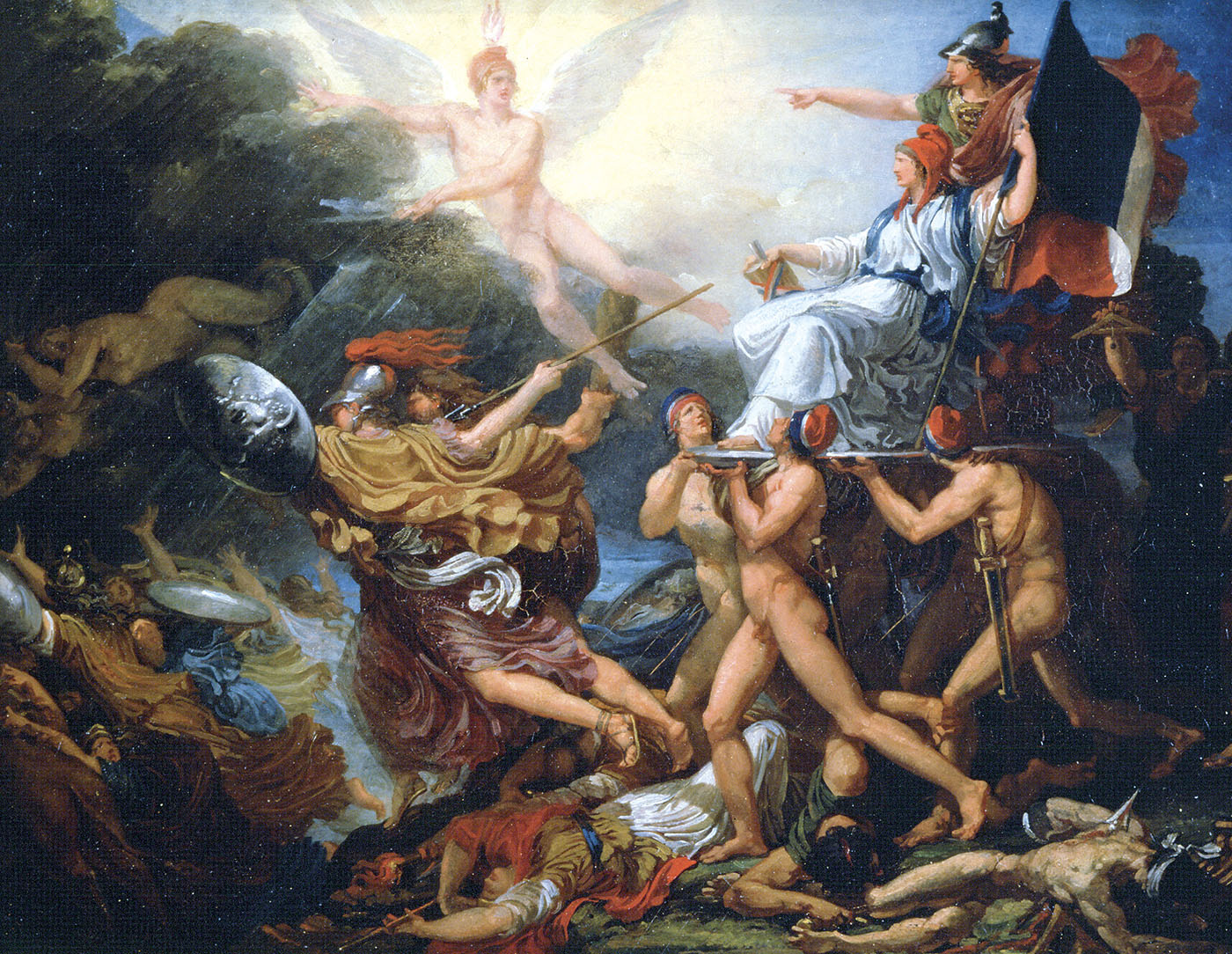
Jacques Réattu (1794) – Le triomphe de la Liberté
Red hats have a long and variegated history in politics. There is, without any question, the small matter of the current unpleasantness south of 49º N. [citation NOT needed] The red Phrygian cap was a favoured symbol of the Jacobin Club and throughout Revolutionary France.2 There is, from our own canon, the pure laine pompons adorning the Patriotes in the Lower Canada Rebellion.3 The latter example lives on to the present in the tousled tuque of Le Vieux de ‘37 on the Patriote flag. Those keeping Papineau’s political legacy alive would go on to found the Parti rouge, itself an antecedent to both Québec Liberalism in the PLQ and Canadian Liberalism in the Liberal Party of Canada, both of which identify themselves with red to this day.4
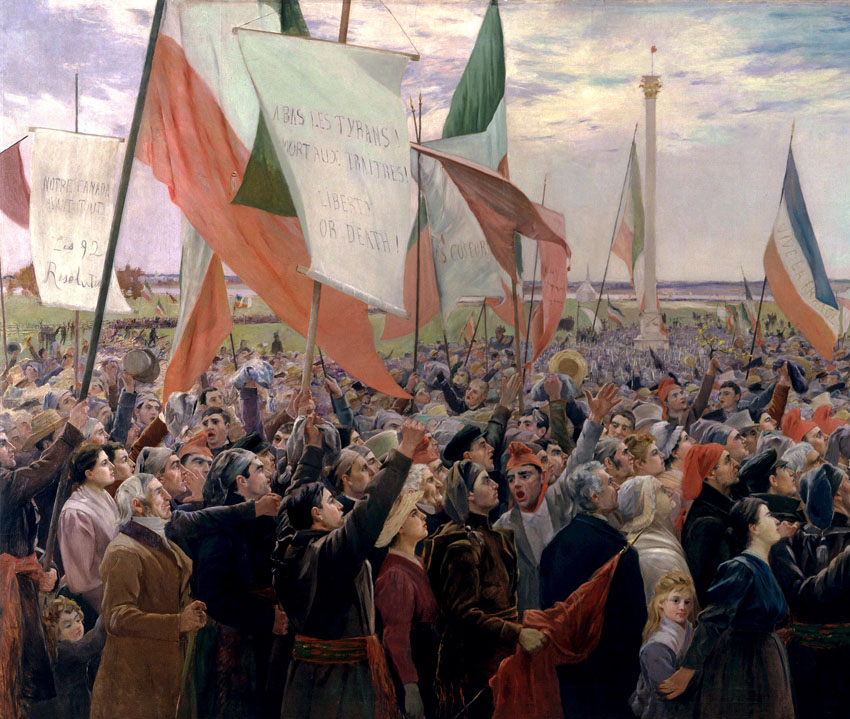
Charles Alexander Smith (1892) – Assemblée des six-comtés
Given the factional diversity above, I hesitate to draw too sweeping a Grand Narrative of Red Hats. What line could be neatly fixed between the Reign of Terror, an agrarian revolt in the name of responsible government, and… whatever, exactly, motivates the 45th President of the United States? (Which may itself be a reign of terror.) Be under no illusion that Donald Trump could tell a Patriote, from a patriot, from a stale ham sandwich. Which tradition, if any, explicitly motivates the Alberta Liberals could then also charitably be some mystery. It bears resemblance at the superficial level to the plague of slogan-emblazoned red ball caps to our south, but red caps have their own storied place in the history of Canadian liberalism from which one could be inspired…

Jeff Cirillo (2017) – Trump Inauguration
Thankfully, Khan and the Alberta Liberals take the guesswork out of their sourcing. Khan relays to HuffPost Canada that their choice riffs within the Trumpian tradition, offering that “it’s a bit of troll on Mr. Trump and his divisive, negative campaign hat, and taking back red.”
What a curious strategy. I charge that the Alberta Liberals are not reclaiming the red hat, but hitching their wagon to its memetic star. If it is indeed a critique, it does not make much sense. To be completely frank, I fail to see how employing sexual innuendo to promote hydrocarbon extraction is in any way a commentary on, or in any way positionally and/or attitudinally divergent from, Donald Trump.

White House (2017) – Trump at Andeavor Refinery
Let us once again be charitable and assume it is a critique. I have no reason to doubt Khan’s sincerity, and the alternative does not comport with my understanding of his character. It is both good and expected that Khan deplores the tendency of the U.S. president to formulate exclusive conceptions of identity. But there is one constant, which Khan does not disavow, between the red-capped militants throughout political history. To see it, perhaps we should examine the outcomes of prior red-hatted movements. In Revolutionary France, it is rumoured that the tricoteuses grew to knit their bonnets rouges while gathered around the guillotine during increasingly common public executions.5 Here in Québec, while the popular struggle is venerated by many, the demands of the Parti patriote ultimately resulted in armed conflict and military repression.6 Stateside, the project of American Great-again-ness has come at the cost of the State Department, IC independence, and naked defiance of both US and international law, as well as earned the malice of allies close, across the Atlantic, and in the global south.
Here is the ✨Grand Narrative of Red Hats.✨ Imbued within the skull beneath it is a willingness to tolerate unacceptable costs as a political actor prone to miscalculation. The caps are emblematic not only of anti-state7 agitation, but anti-state agitation born of exigency, real or perceived. A red hat makes a purportedly popular demand and damns the consequences. Recall Morgenthau’s ideal political actor in Truth and Power:
He must detach himself from his own emotions and aspirations and judge the other man with an objectivity similar to that with which a scientist tries to understand the phenomena of nature. He must put himself into the other man’s shoes, look at the world and judge it as he does, anticipate in thought the way he will feel and act under certain circumstances. Seeking to deprive him of his worth as a person by using, diminishing, or destroying him, he must assess him exactly as a person in his own right. Paradoxically, he must be just in judgment in order to be effectively unjust in action.8
The red-hatted, in their exigency, favour incuriosity to objectivity. The shoes of another are foreign territory. (And foreigners are scary!) This incuriosity and general disinterest in assessing others makes the… popularity… of their “popular demands,” while not with certainty wrong, inherently suspect. Morgenthau’s statesman must be capable of “[looking] at oneself from a distance without being overly impressed.”9 Meanwhile, those in red caps cannot look beyond the fitting room mirror. Their field-of-view is as close-cropped as their behatted selfies. The cap is, to echo a refrain from the supporters of this era’s exemplar hawker of red hats, a self-indulgent declaration along the lines of “fuck your feelings!” But we must never, as effective political agents who wish to execute an agenda fully, fail to consider the feelings of another. The red hat declares oneself an unideal political actor, unjust in judgement. The justness of their actions is an exercise I will leave to the reader’s political proclivities.
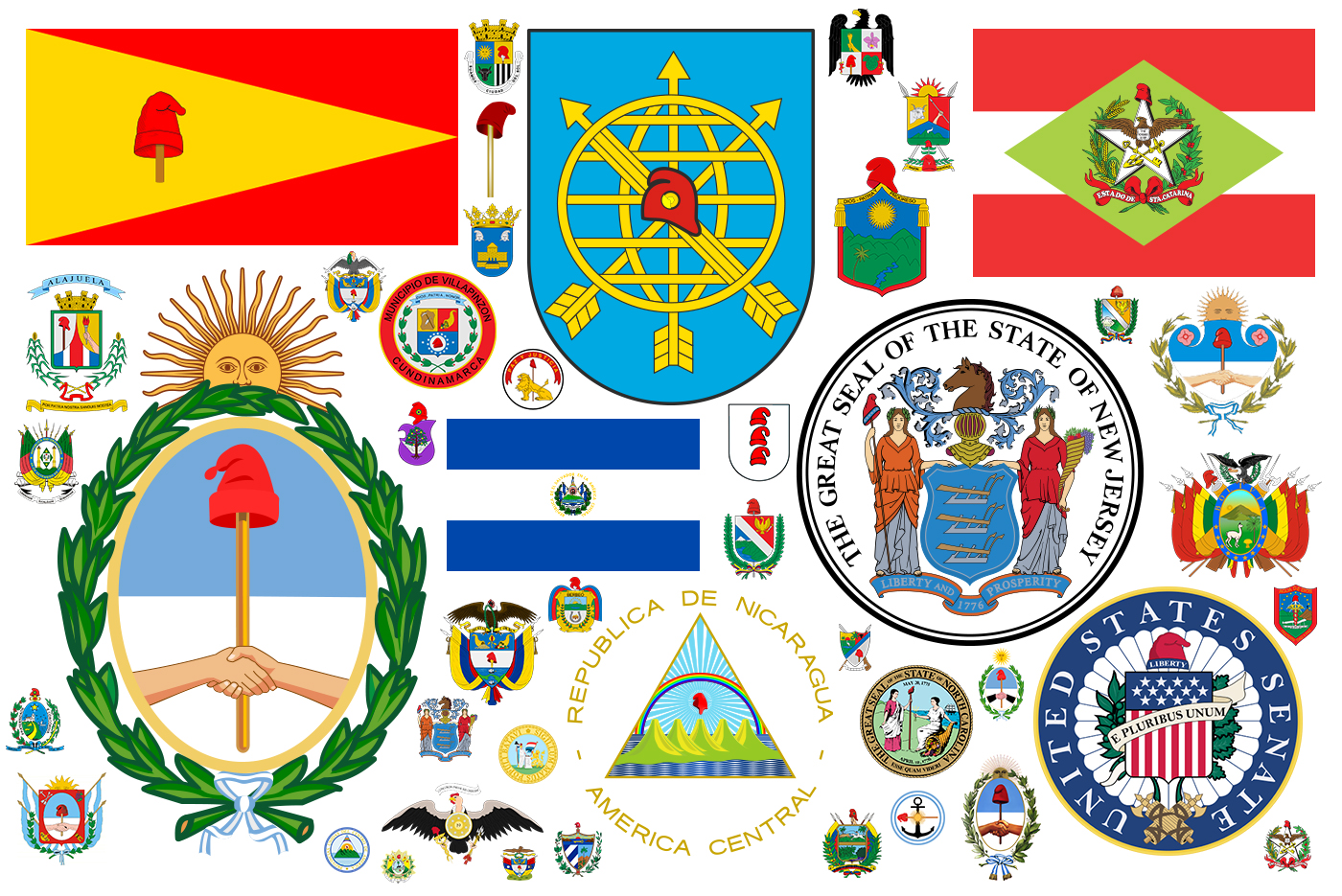
An important exception to the Grand Narrative of Red Hats applies to pictographic depictions of the red Phrygian cap – a device dating to the fall of Caesar – in state symbols. Distribution is too cosmopolitan, from New Jersey to Rio de Janeiro, and over too lengthy a time period to draw meaningful, coherent conclusions. Heraldic uses are excepted, so let us focus on the actual garments.
The “fuck the costs and fuck your feelings” sentiment dovetails well with, say, simmering resentment towards Ottawa over transfer payments, pipelines, or petty annoyances various and sundry. That is hardly an unknown quality in Alberta generally and this provincial election specifically.
It is an icon, a representative symbol of an attitude. The synergistic special sauce behind the red hat is the telegraphing of willingness to irrationally tolerate unacceptable costs in the name of one’s stated goals. The red cap serves as an apostille to observers, verifying “I am not a rational actor.”
I see no reason to doubt from past behaviour that Mr. Khan is anything but a genuinely decent, thoughtful, and intelligent person, saddled with the unenviable task of re-habilitating the provincial Liberal brand in a place where it has become a tumbledown skeleton of a structure. While the mind strains, I do indeed believe this is intended as a critique, and further believe that it is both unclear and resoundingly unsuccessful. The alternative places us in the Bizarro World scenario in which the Liberals are successfully utilizing iconography to… ahem… “own the libs”??
By this point, my billfold of free-flowing charity is empty, my altruism and humour stretched to their absolute maximums. The good faith conclusion is that it is terrible communications work. Any intimations to the contrary, and we would be left with nothing more than Khan as a constitutional lawyer of poor constitution.
Alberta Lays Pipe
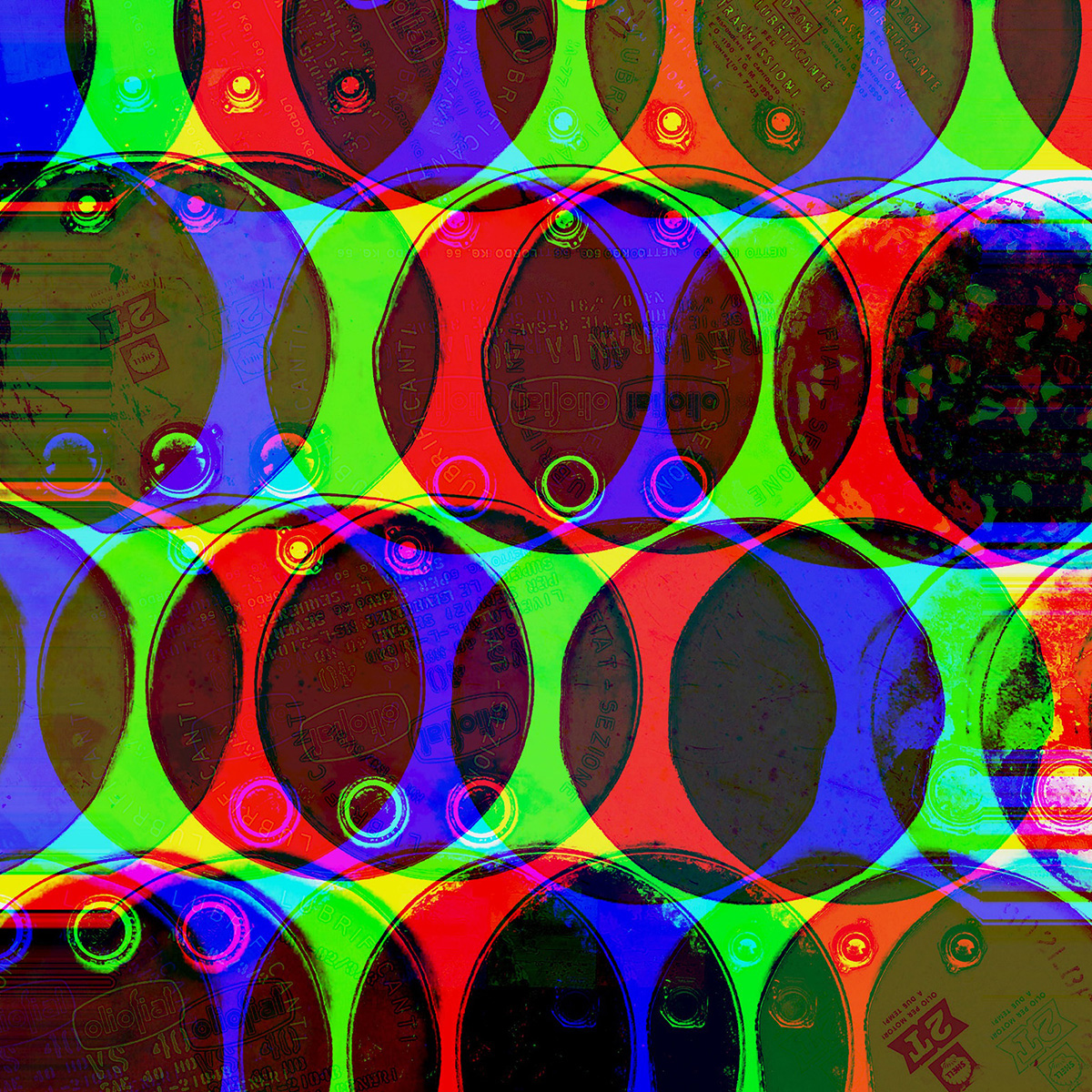
Crude and crudeness.
For all the words about red caps, this post is ultimately not about headgear. The hat is an icon, and its rapturous acceptance by the Albertan commentariat reveals certain attitudes and preferences. The use of sexual vulgarity sends a definite message. In the tweet first offering #LayingPipe hats for sale, Khan mentions Énergie Est. That, too, delivers a definite message.
Energy East, as any cursory search of the literature in Canadian pipeline debates will confirm, is a pipedream an infrastructure project intending to link oil producers in the West with export terminals on the New Brunswick coast that was and remains particularly sensitive in Québec and to Quebecers. Most of the 1,500 kilometres of new pipeline required is to be constructed in our province, in exchange for rather nebulous economic benefit. Put plainly: Quebecers do not consent to this project.10
It is also something that Alberta really, really wants – to the point of adopting existential framing regarding the province’s continued economic viability whenever the subject arises. Full explication of the reasons Energy East has proven a costly and time-consuming wet dream for the westerly provinces would merit a post of its own. These pages are not a commodities blog, though information on the Alberta government’s willingness to impose curious production controls and changes in global commodity prices is widely available. I am not a lawyer, but failures of the NEB consultative process have been dutifully covered elsewhere. While I do dabble in economics, this is not an economics seminar, and I feel comfortable leaving that to Andrew Leach and Trevor Tombe.
This is a communications shop… we talk about stuff like logos here.11 The communications effort, from both TransCanada and unaffiliated proponents, leaves much to be desired.
To begin, this is a project for which the vast majority of new construction affects the regions of Québec. It is curious and disappointing, then, that TransCanada did not immediately make their filings with the National Energy Board available in French, the sole official language of Québec and the first-and-only language used by many en région. Pretend for a moment that you sit on the council of an MRC in Québec, understandably curious about the impact of this mega-project on your community, only to discover that the architect does not respect you enough to communicate in your first language. That is not to say TransCanada made no effort to enrage engage Quebecers. TransCanada’s lobbying push consisted of taking on the services of former Québec Premier Jean Charest, who almost immediately found himself at the centre of a conflict-of-interest scandal, triggering the resignation of all three Energy East reviewers at the National Energy Board.
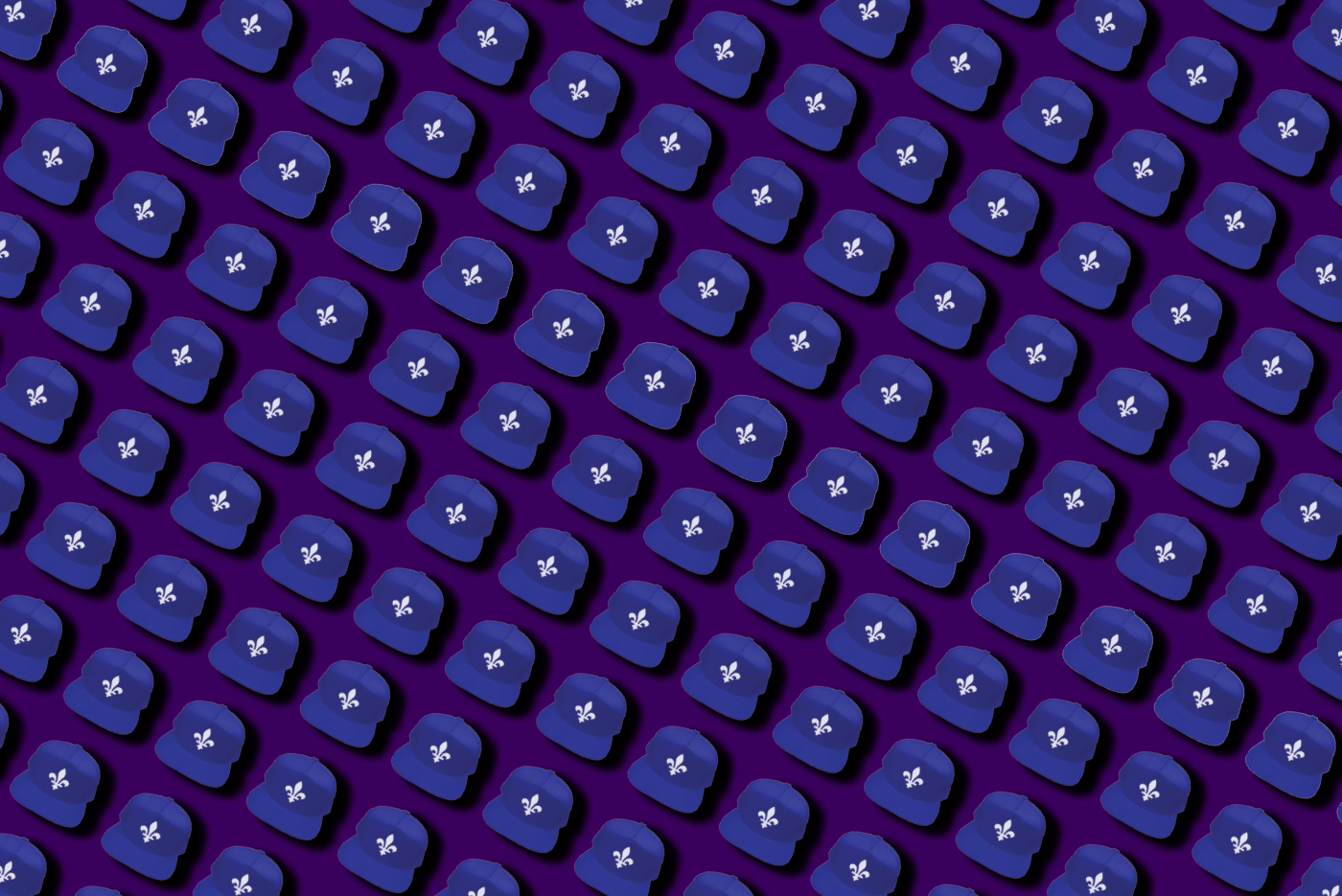
TransCanada’s fellow travellers would be well-served to remember that Québec can and does read what they are saying, even if it is in a non-official language. We do, in fact, notice when Brad Wall very publicly and repeatedly misunderstands how transfer payments work. But what is to be done for a mega-project lacking any economic imperative? Many boosters fall into tropes of nationalism. Chintzy schemes, such as eyeroll-inducing plans to mandate slapping little flags onto every gas pump in the country debase the entire pitch. The argument that this is a purposeful and necessary bit of infrastructure, not in any way entangled in nation-building designs, would be more persuasive if the backers refrained from making those exact nation-building arguments in ideologically-sympathetic media clubhouses (which, again, Quebecers see and read).12
There are reasonable disagreements as to whether the identity of the Canadian state is postnational or plurinational. Many corners of public life here in Québec do opt to articulate some vision of the latter. An idea that gains little purchase, however, is the thought that this entire place can be (or that it is indeed desirably) conceived of as one singular and uninterrupted, in any way homogeneous nation. Further, if one is to go about building a nation, tremendous pieces of export infrastructure are an outmoded means of doing so. The days of haughtily clearing great swathes of this country absent a spirited commitment to consultation and consociation have irrevocably receded into the past. The notion of nation-building is pollyannaish at the absolute best, pining for a bygone conception of what this place is and an inaccessible, abandoned way to build it. At worst, it erases the spirited distinctiveness and discord that makes this mega-federation a nonpareil – the very reason this is the most excellent place to live.
There are many reasons the Energy East proposal died. That the architects ignored the preferences, experiences, and input of Quebecers in pitching it is certainly among them.
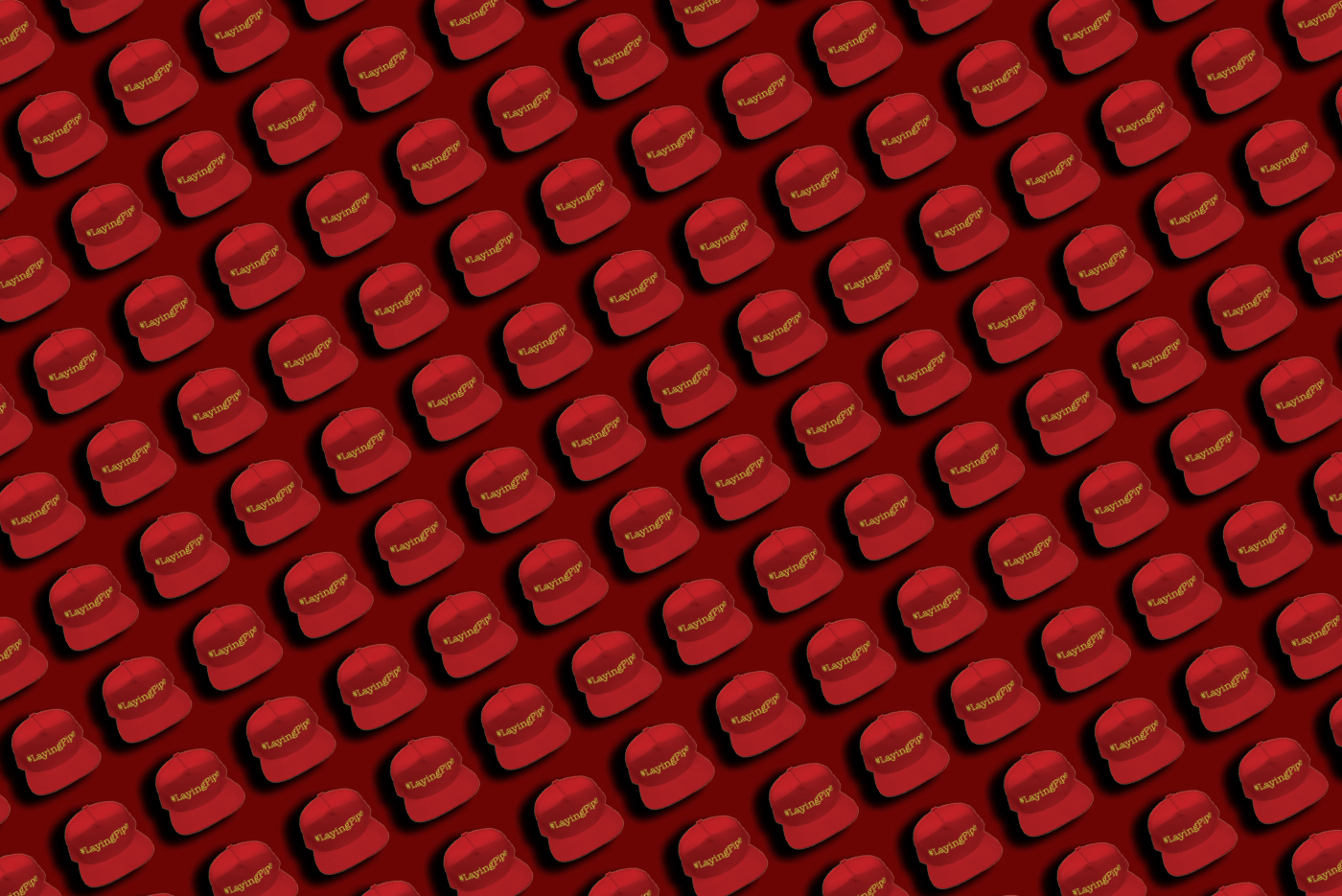
And it is here, emblazoned as a sexual allusion across a red cap, that Québec is once again ignored. Québec is viewed not as a partner in the project that is this country, but an object to be overcome and defeated. The commentary in this recent election, this singular focus on provincial pipeline priapism at the expense of all other matters, betrays a worrying level of comfort with the violation of their co-patriots. Alberta desires to lay pipe over Canadians, acting without hearing their voices and not necessarily with their consent. It is a Canada not of consociation, but conquest.
Appearances are not favourable. It is not difficult to discern what is wrong with advocating for a project for which there is a lack of consent by using charged sexual language. Where previously one perceived Québec bashing, there is now an insinuation of Québec battery.
Does Khan himself feel this way? Doubtful. He has volunteered his feelings on Ottawa and Québec. While he asserts that “Albertans have a right to be angry” with partner governments in the federation, his answer was – by no small margin – the most dovish of the debate. With at least six weeks in Chicoutimi racked up on his CV (predating any opportunity to lay pipe there), he has spent more time in Sag-Lac than I have.
That which sticks in my craw is neither Khan the man, nor the zero seats that his party controls in the Legislative Assembly of Alberta. What concerns me is that all great emblems are, well, emblematic of something – and this hat exemplifies an attitude vastly more common than support for the Alberta Liberals.
“Laying pipe” as attitude extends a bit beyond Notley’s self-imposed and spiteful era of prohibition. The repertoire of the UCP leader and freshly-minted Premier of Alberta has been described as “all-out war with Ottawa,” perhaps not too grand a claim for a leader who in his own press release purports that the province he seeks to lead is “under assault from other governments in Canada.” Kenney suggests that he will wantonly opt-out of disagreeable bits of the Constitution, as if provisions are akin to an à la carte menu. Fringe groups instead propose opting out of the country. Kenney, while not a separatist himself, never shies from using polled support for secession as a cudgel in attempts to get his way on assorted issues.
The head on which the red cap fits most snugly is not Khan’s, but the new Premier of Alberta. Threatening to call a referendum – setting aside that a referendum could not, even in the event of a positive result, effect his desired results – and re-opening the Canadian Constitution shows a willingness to incur unacceptable costs. It cannot be overstated how foundational ducking the Constitutional amending formula is to governance in Canada. Successive governments have taken great pains and performed gymnastic feats of courtroom rhetoric to avoid having to re-open the Constitution. A common complaint in my life both personal and professional is that I tend to rely a bit heavily on writings from International Relations – why else would I interrupt a discussion of red hats with a paragraph from Morgenthau? – though here it feels most apt. The central preoccupation of IR as a discipline is conflict, and in what setting is that more appropriate than a leader pledging “all-out war”?
Sorry, eh?
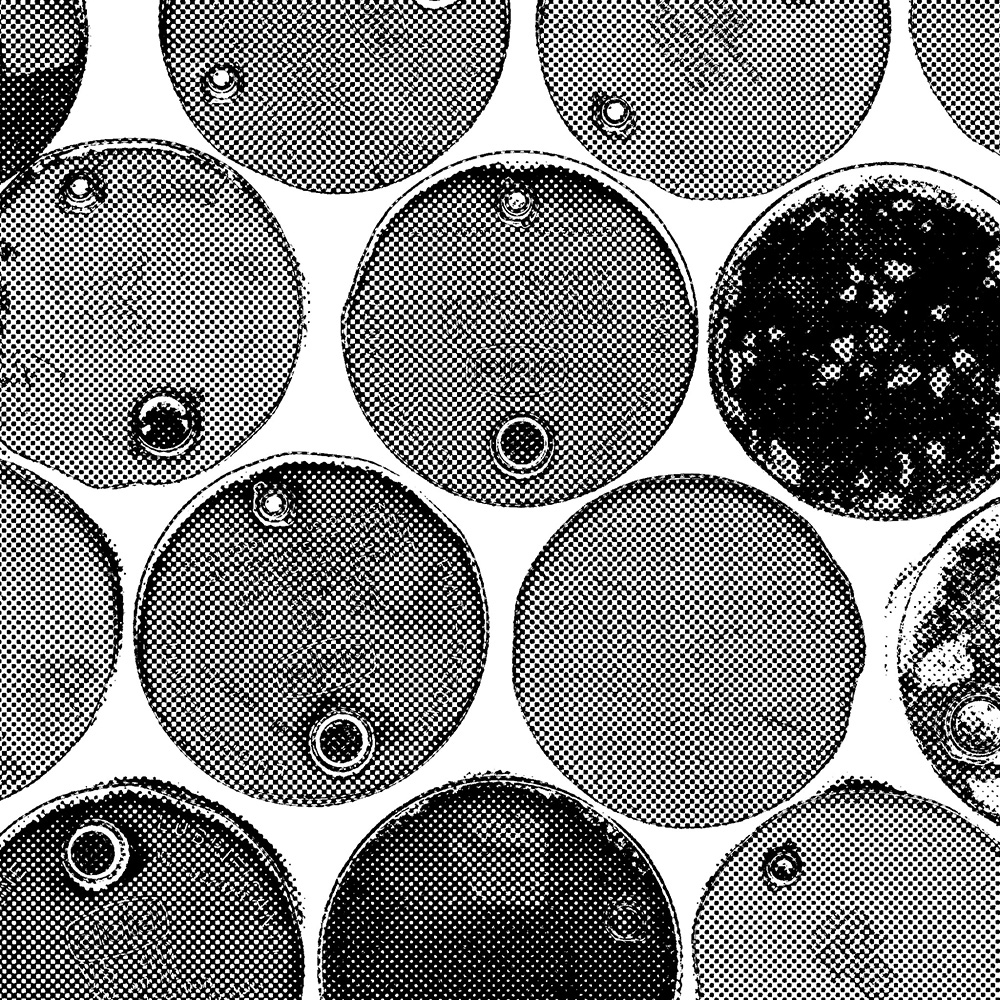
Allow me to clarify that in no universe do I hate Alberta.
I realize that this may read as uncharitable to the good people of Alberta, and I want to assuage any concerns. The optics, writing of priapism and political battery in a loft above Ville-Marie’s ice-glazed trottoirs, are not lost on me. I am neither pure laine, nor am I some élite Laurentian avatar, decked with a maple leaf crown in an Outremont café. Rest assured, my laine is rayon, and I buy my coffee at the dep.
The method de rigueur by which our provinces attempt to understand each other seems to be a leisurely-paced epistolary novel playing out in the opinion pages of Maclean’s. (For reference: One may read the Saint Lawrence’s opening salvo and a response from the Rockies here.) I have well-founded doubts as to whether a series of kind letters is what it takes to get these two siblings seeing each other à hauteur d’homme. But I have always wanted to write one – and now, pulling the Québec card, might be my only opportunity. Let’s go!
Alberta, we are twins, we do not wish you ill.
In any given Statistics Canada annual reference period this decade, the number of Quebecers choosing to make Alberta their new home has ranged from ca. 2,500 to 7,000. Since 1 July 2011, 31,946 (or about a Leduc’s worth of) Quebecers have come to call Alberta home. 16,194 people (that would be roughly a Hampstead, a Montreal West, and a Sainte-Anne-de-Bellevue) departed Alberta for Québec, making Alberta the second-largest sending province for Returning and New Quebecers, behind only our near neighbours in Ontario.13 Not that we are keeping track or anything.
Not only do we live together, but we do an awful lot of shopping together. Each year, Alberta buys almost 10 billion dollars worth of stuff from Québec, and the dollar value of that trade is increasing.14 Meanwhile, Quebecers buy about 6.3 billion dollars of stuff from you each year, making you our second-largest import partner after Ontario (and also our second-largest export market in Canada!).15 Oh yeah, and a lot of that 6 billion is oil. Per Banque Nationale, Québec gets more oil from Alberta than any other single source. So you can foist those tacky gas pump flags upon Québec if you want, just do keep in mind it will be a sea of unifoliés.
One thing this place does not sell to you, though, and it is important to make this crystal clear in light of the misguided boycott of Québec products: that scary, bilingue Natrel milk on your grocery shelves. Agropur is a Québec co-operative, yes – but that milk is made in Edmonton. You are hurting Edmonton. Happy to have cleared that up.
We share a lot in terms of people and stuff (but not that carton of milk!), but of course, a partnership is a bit more than that. That kinda just makes us roommates. Our temperaments and inclinations are more attuned to one another than we may realize or admit. I have heard recently some of you promise “war” with Ottawa. We, too, have long laid bare our very strong feelings about Ottawa! There was even a referendum or two, as you apparently plan, though the results of that did not exactly leave anyone satisfied. The constitution you desire to amend, well, Québec has written a lot about that and – crucially – declined to write one very important bit. A signature or something.
The sting of being unable to realize an energy projet due to the realities of federalism is not an emotion that is foreign to us. Québec has tried, and tried, and tried, and tried, and tried in this area. And sometimes things boil over. Folks here have even exchanged silly, rancorous words with other provinces over energy spats. Part of being in a big country with opinionated neighbours is that we occasionally do not realize our designs for it – or at the very least, our designs will be flavoured by the inputs of others.
And Quebecers love your inputs! You are not a near neighbour, like our friends across the Ottawa River, but you are a close neighbour. The flag of Montréal incorporates the flora of people groups with competing interests that came together to make this island such an interesting place to live, and one could do worse than slipping a blue-flag iris and wild rose into the breast pocket to represent the explosive passions that make the idea of Canada so appealing. (Why should franco-albertains have all the fun?)
Donning red caps, electing the most bombastic figures that rogues’ gallery of politics can scrounge up, telegraphing a willingness to incur unacceptable costs and “fuck [our] feelings” is entirely foreign to that idea of Canada. We do not solve our problems by riding roughshod over our friends in a spirit of harsh and uncompromising unilateralism. No clue where I have heard it before, but “principled negotiation with other participants in Confederation within the existing constitutional framework” is what makes this place tick.
It is a difficult time. It is fine that you are seeing red. Please take off the red caps.
Bonne élection and bonne chance. Veuillez recevoir nos salutations distinguées.
Hi, fancy seeing you down here! I write TheRedChannel to increase civic-minded visual literacy. This work is available to the end user without advertisements and free-of-charge, and I think it is important to try and keep it that way forever. If you saw something here that made you happy today, please do consider helping to keep the lights on and the servers running.
If you saw something that made you unhappy today, please flame me on Twitter!
1 : Photo is compliments of John Cameron, a view of Christo’s summer show at the Serpentine Galleries, London. I cannot wait for Christo’s major exhibition at the Centre Pompidou in the coming year.
2 : John Timbs, Things Not Generally Known: A Popular Hand-book of Facts Not Readily Accessible in Literature, History, and Science, pp. 134–5. ↩︎
3 : My source on the red-ness of this particular knit hat is The Canadian Encyclopedia. Do note that the colour of the caps worn by Patriotes is not a subject free from controversy. Francis Back argues a preponderance of blue-ness. Thomas Hamilton notes a bifurcation of red and blue hats between Montréal and Québec city. Elzéar Lebelle’s operetta La Conversion d’un pêcheur de la Nouvelle-Écosse opts to symbolize a character’s shift in loyalty from Patriote to Unionist by a switch of the cap from red to blue. (Noted by Doucette .) To this day, the red examples appear to be durable in popular culture. I choose red here as numerous sources affiliate it with the Patriote movement, as well as the quite obvious and direct descendant in the Parti rouge. ↩︎
4 : Claude Bélanger, L’Encyclopédie de l’histoire du Québec, Parti rouge. ↩︎
5 : Take your pick. See either p.77 of John Wilson Croker’s History of the Guillotine, or the dictionary entry for “guillotine” in Tawdry Knickers and Other Unfortunate Ways to Be Remembered by Alex Novak. ↩︎
6 : Phillip Buckner, The Canadian Encyclopedia, Rebellion in Lower Canada. ↩︎
7 : Alternatively, should they grow to form the state, anti-élite. ↩︎
8 : Hans Morgenthau, Truth and Power: Essays of a Decade, 1960-70, p.69. (Nice!) ↩︎
9 : Ibid., p.157. ↩︎
10 : Provincial interest in this project also proves elusive to policy think-tanks, regulatory boards, and governments in Ontario, though our fellow Central Canadian province never seems be the one taking on the role of electoral punchbag. ↩︎
11 : And we are pretty damn serious about it! ↩︎
12 : See: Any Postmedia outlet. Alternatively: Noted trash blog doing a disgrace to NDG, “The Post Millennial.” ↩︎
13 : http://www.stat.gouv.qc.ca/statistiques/population-demographie/migration/internationales-interprovinciales/608.htm ↩︎
14 : https://open.alberta.ca/dataset/51d2f934-6997-4316-af4c-5fb66bcd89eb/resource/5c4a72cb-90b0-497e-973e-fcbac729d45a/download/sp-commentary-04-19-18.pdf ↩︎
15 : https://www150.statcan.gc.ca/n1/pub/13-607-x/2016001/1059-eng.htm ↩︎
